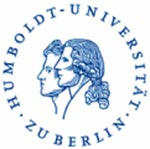HU Research Enables Better Understanding of Chlorophyll Synthesis

Photosynthesis is an essential process for the existence of all organisms on our planet, in which sunlight is converted into biochemical energy. The pigment chlorophyll plays a key role in this process. A team of researchers at the Humboldt University of Berlin (HU) has now come up with new findings on how the synthesis of chlorophyll is regulated.
Sunlight is absorbed by the pigment chlorophyll and converted into biochemical energy through photosynthesis. The chlorophyll is integrated into light-harvesting chlorophyll-binding proteins (LHCPs) in the plant organelle chloroplast.
Once these LHCPs have been synthesised in the zytoplasma and imported into the chloroplasts, they are transported onwards to their destination by the chloroplast signal recognition particles cpSRP43 and cpSRP54, where they are incorporated into the thylakoid membranes in which the photosynthetic processes occur. The chlorophylls are inserted while the LHCPs are being integrated into the membranes.
In order to ensure that sufficient amounts of chlorophyll are always available for the photosynthesis, the chlorophyll synthesis must be effectively coordinated with the provision of the LHCPs. The rate-limiting step of the chlorophyll synthesis is carried out with glutamyl-tRNA reductase (GluTR) — the first enzyme of the metabolic pathway.
GluTR then ensures the required quantity of 5-aminolevulinic acid, the building block of all chlorophylls. The activity and stability of GluTR is regulated in a very diverse way. A research team at HU recently investigated exactly how this process is regulated.
Dr Peng Wang, a member of Prof Bernhard Grimm’s plant physiology work group, discovered that cpSRP43 exerts chaperone properties on the enzyme GluTR. More specifically, it supports the enzyme in the correct convolution and in the assembly in complexes.
The cpSRP43 interacts with GluTR on “aggregation-prone motifs” (i.e. protein areas which are particularly prone to aggregate formation) and prevents the aggregation of the GluTR. This promotes the stability of the GluTR and helps avoid its inactivation.
Thus, in their recently published study, the researchers describe an additional function of the chaperone cpSRP43 in a new type of posttranslational control mechanism of the GluTR. Besides the transportation of the LHCPs within the chloroplasts, by stabilising GluTR, cpSRP43 also ensures the appropriate synthesis of the 5-aminolevulinic acid and thus the suitable amount of chlorophylls throughout continuously changing environmental conditions.
The work group assumes that, thanks to the chaperone function, cpSRP43 now enables a linking of the tailor-made rates of the LHCP transportation as well as of the chlorophyll synthesis.
The complete study was published under the title “Chloroplast SRP43 acts as a chaperone for glutamyl-tRNA reductase, the rate-limiting enzyme in tetrapyrrole biosynthesis” in the journal Proceedings of the National Academy of Sciences of the U.S.A.
Further information
http://www.pnas.org/content/early/2018/03/21/1719645115
https://www.biologie.hu-berlin.de
Contact
Prof Bernhard Grimm
Institute for Biology
Phone: 030 2093-46312
bernhard.grimm@rz.hu-berlin.de
Contact
Hans-Christoph Keller
Spokesperson of Humboldt University of Berlin
PR department head
Phone: 030 2093-2332
hans-christoph.keller@hu-berlin.de
Media Contact
More Information:
http://www.hu-berlin.de/All latest news from the category: Life Sciences and Chemistry
Articles and reports from the Life Sciences and chemistry area deal with applied and basic research into modern biology, chemistry and human medicine.
Valuable information can be found on a range of life sciences fields including bacteriology, biochemistry, bionics, bioinformatics, biophysics, biotechnology, genetics, geobotany, human biology, marine biology, microbiology, molecular biology, cellular biology, zoology, bioinorganic chemistry, microchemistry and environmental chemistry.
Newest articles

Optimising the processing of plastic waste
Just one look in the yellow bin reveals a colourful jumble of different types of plastic. However, the purer and more uniform plastic waste is, the easier it is to…

Anomalous magnetic moment of the muon
– new calculation confirms standard model of particle physics. Contribution of hadronic vacuum polarization determined with unprecedented accuracy. The magnetic moment of the muon is an important precision parameter for…

Antibodies can improve the rehabilitation of people with acute spinal cord injury
Antibody that Neutralizes Inhibitory Factors Involved in Nerve Regeneration Leads to Enhanced Motor Function after Acute Spinal Cord Injury. Researchers at 13 clinics in Germany, Switzerland, the Czech Republic and…



